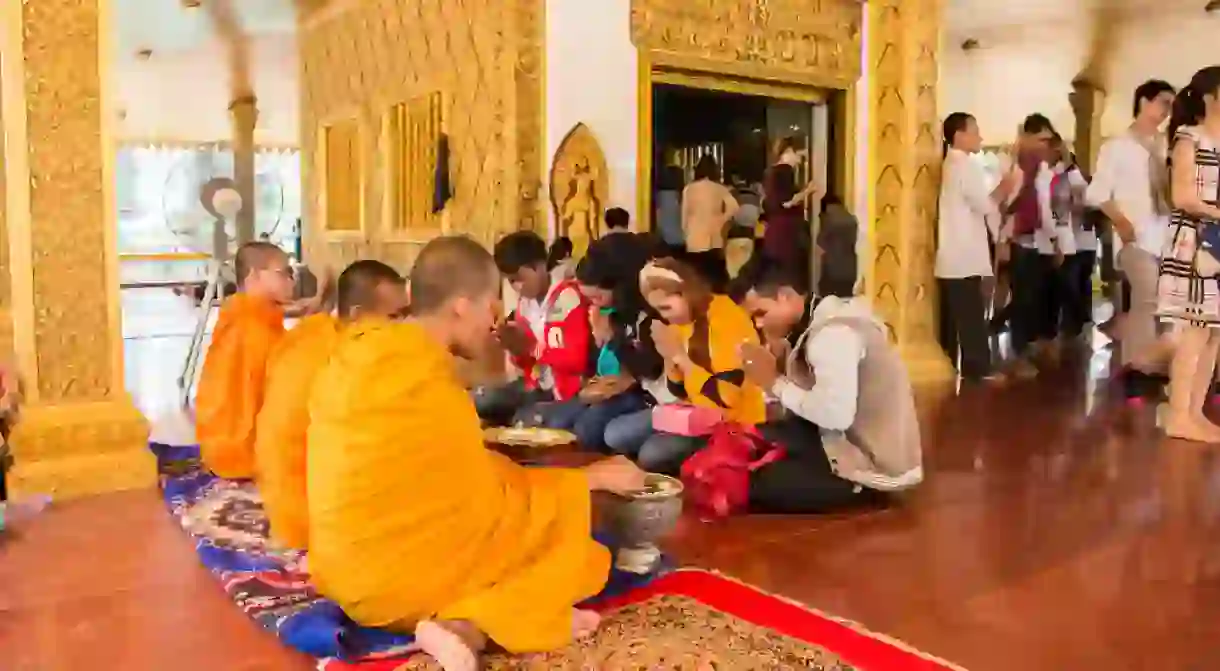A Brief Guide to Khmer New Year

As Cambodia’s humidity hits epic heights in April, Khmer New Year couldn’t come at a better time, as Cambodians escape the city and urban centres to head to their homelands for the most important celebration in the Cambodian calendar. Here is our brief guide to the Khmer New Year.
Those familiar with the vibrant Cambodian capital with its rammed roads, incessant noise of construction and melting pot of colour and energy, will be shocked to see the transformation during Khmer New Year – akin to a scene from the film 28 Days Later. Abandoned streets, the occasional motorbike steaming down an empty Sihanouk Boulevard, no street vendors, shuttered shops and restaurants in Phnom Penh can only mean one thing: Khmer New Year, or Chol Chhnam Thmei.

Spread across three days – but bear in mind many Cambodians take the full week off – this is a time when those living and working away from home return to their families in the provinces to mark the end of harvest season and the start of a new year. The dates vary from year-to-year, with this year’s event falling on April 13 to 16.
With the majority heading home, the countryside is a hive of activity, the villages that dot the country alive with festivities. Crowds of kids can be seen playing games in the paddies, parties – usually groups of Cambodians dancing around a booming stereo clutching cans of Angkor beer – go on into the early hours, and there’s real cheer in the air, as many families reunite for the only time in the year.
The first day of Khmer New Year is called Moha Songkran. It is believed that on this day a new god or angel is appointed to protect everyone throughout the coming year. To welcome him, people clean and decorate their houses, and wear new clothes. Offerings of fruits, incense sticks, lotus flowers and cans of coke are also left at the spirit houses that guard entrances, a common sight across the country during this time.

Day two is Wanabat – Day of Giving – when gifts are given to parents and elders. Children also receive new clothes, and money and used goods are donated to the poor. In the evening, visits are made to the pagoda to receive blessings from monks.
The third day is Tanai Lieang Saka, which means new beginning. Monks are visited in the morning for blessings so expect early morning queues at the pagodas. This is followed by colourful celebrations in the afternoon, which often spill into the night.
If you’re in Cambodia during this time then it pays to plan ahead. Book transport and accommodation in popular resorts, such as Kampot, Kep, Siem Reap and Sihanoukville, in advance as they fill up very quickly. Also expect to pay more as prices are often hiked up a peg or two at Khmer New Year. Expect most businesses to be closed, including many restaurants. Those that aren’t will operate on skeleton staff and may close early. Many attractions, such as museums, will also close their doors, and finding a tuk tuk or moto late at night may be difficult.
http://youtube.com/watch?v=yR61uKKum0U
While Phnom Penh empties out, Siem Reap is a centre of celebration during this time, with local holiday-makers heading there to see in the New Year and take part in the three-day Angkor Sankranta event at Angkor’s temples. This attracts crowds of Cambodians to watch the series of traditional games, such as rice cake-eating and largest sticky rice cake competitions.
Wherever you happen to be in Cambodia, there will be a bunch of locals happy to show you the Khmer way to see in the New Year.













